#Content Strategy Automation
Explore tagged Tumblr posts
Text
"Top 5 Noteworthy AI Writing Tools to Choose From in 2024"
NOTION Notion has seen remarkable growth in Korea! It’s an indispensable AI tool. Performance: Notion provides a unified interface for documents, databases, and project management tools. Users can easily create and manage various types of content, including text, images, tables, and checklists, through Notion. Usage Examples: Project Management and Collaboration: Track the progress of team…

View On WordPress
#AI Blog Writing Software#AI Chatbots for Business#AI Content Creation#AI Writing Assistance#AI-Powered Customer Service#Content Strategy Automation#Digital Marketing AI#Multilingual AI Translation#Personalized Content AI#SEO Optimization Tools
0 notes
Text
Boost Your Outreach with the Best Cold Email Automation Tool in the USA
In today’s competitive business landscape, effective communication is key to building relationships and driving sales. One powerful method for achieving this is through cold email automation. By leveraging advanced tools, businesses can streamline their outreach efforts, save time, and improve response rates.
Why Cold Email Automation?
Cold email automation is essential for scaling outreach efforts. Instead of manually sending emails to prospects, automation tools handle this task efficiently, allowing you to focus on crafting compelling messages and targeting the right audience. This not only boosts productivity but also ensures that your emails reach a wider audience.
Choosing the Best Cold Email Automation Tool
When selecting a cold email automation tool in the USA, consider the following features:
User-Friendly Interface: The tool should be easy to use, with a clear dashboard and intuitive features.
Customization Options: Look for tools that allow you to personalize your emails, which is crucial for engagement.
Analytics and Reporting: Comprehensive analytics help you track open rates, click-through rates, and responses, enabling you to refine your strategy.
Integration Capabilities: Ensure the tool can integrate with your existing CRM and other marketing platforms.
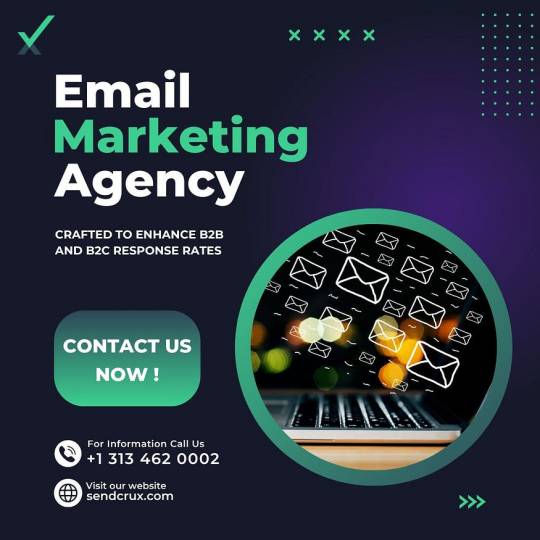
Best SMTP for Cold Email
To maximize the effectiveness of your cold email campaigns, it’s crucial to use the best SMTP (Simple Mail Transfer Protocol) for cold email. A reliable SMTP service ensures your emails are delivered promptly and securely, reducing the risk of your messages ending up in spam folders. This enhances deliverability and ensures your outreach efforts are not wasted.
Benefits of Using an Email Marketing Platform
An email marketing platform that includes cold email automation and the best SMTP for cold email provides several benefits:
Efficiency: Automate repetitive tasks and manage large-scale email campaigns with ease.
Personalization: Tailor your messages to individual recipients, increasing the likelihood of engagement.
Scalability: Handle a growing list of contacts without compromising on quality or performance.
Conclusion
In conclusion, boosting your outreach with the best cold email automation tool in the USA is a smart strategy for any business looking to expand its reach and drive sales. By leveraging the right tools, including a reliable SMTP service and a comprehensive email marketing platform, you can enhance your email campaigns and achieve better results. Start automating your cold emails today and watch your outreach efforts soar.
Visit: www.sendcrux.com
#best cold email marketing agency in the USA#Unlimited email sender USA#bulk email sender USA#Email Marketing#Bulk Emails#SMTP for cold email#cold email automation software#Small Business#Email Automation#Automation Tools#content marketing#Digital Marketing#Marketing Strategy#Email Strategy#Email campaigns#lead generation#bulk email verifier tool#cold email SMTP#email verifier software#email sender#B2B lead generation#bulk email verifier
4 notes
·
View notes
Text
Cracking the Code: Manifesting Success with AI-Driven Marketing Strategies
As the domain of marketing technology continues to grow at a rapid pace and is driven by growth in artificial intelligence (AI) and personalization, marketers encounter exciting opportunities as well as daunting challenges. Adapting to these changes requires practical approaches that allow organizations to stay current, manage change effectively, and operate at scale.
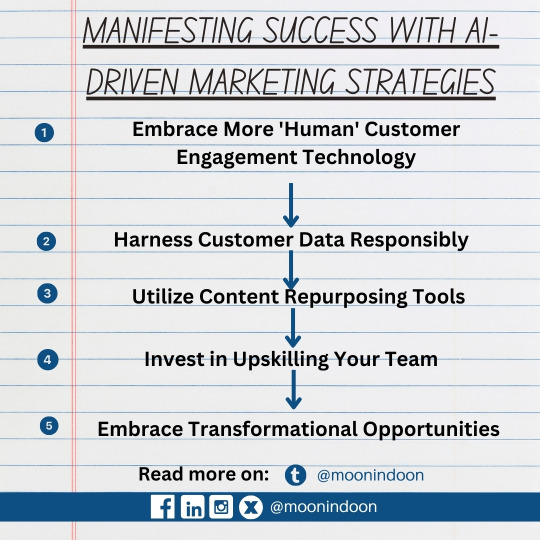
In this article, we explore five practical tactics to help modern marketing teams adapt and thrive in this dynamic environment:
Embrace More 'Human' Customer Engagement Technology:
While chatbots have been around for decades, advancements in AI have significantly enhanced their capabilities. Today, AI-powered chatbots can engage with customers in a remarkably human-like manner, providing round-the-clock support and valuable insights.
Leveraging chatbots not only improves customer experience but also generates valuable data for outbound marketing initiatives. By analyzing customer queries and interactions, marketers can easily get valuable data that can enhance their marketing strategies.
Harness Customer Data Responsibly:
Customers willingly share personal information with companies, providing valuable insights into their preferences, behaviours, and sentiments. Marketers must mine this data responsibly and use it to deliver personalized experiences and targeted offers.
By leveraging predictive analytics and machine learning, marketers can analyze data faster and make informed decisions to enhance omnichannel marketing efforts.
Utilize Content Repurposing Tools:
Authentic content remains paramount in marketing, but creating content for various channels and platforms can be challenging. Content repurposing tools like Optimizely and Interaction Studio help marketers adapt long-form content into social media posts, videos, and other formats.
Expanding your content footprint not only enhances brand visibility but also allows for faster learning and adaptation to changing market dynamics.
Invest in Upskilling Your Team:
While AI-based tools offer significant automation potential, managing and mastering these technologies require skilled professionals. Marketers must invest in continuous learning and cross-functional collaboration to stay ahead.
Effective leadership and teamwork are essential for navigating the complexities of modern marketing. Encouraging knowledge sharing and collaboration across teams fosters a culture of innovation and growth.
Embrace Transformational Opportunities:
As AI continues to reshape the marketing landscape, traditional metrics of success are being redefined. Marketers must embrace the transformative potential of AI and other emerging technologies to serve their customers better.
When evaluating new ideas and technologies, marketers should prioritize customer value and align them with their brand and company values. By focusing on solutions that genuinely benefit customers, marketers can drive meaningful impact and success.
In conclusion, navigating the ever-evolving domain of AI-driven marketing requires a blend of innovative strategies and steadfast principles. By embracing more human-centric engagement technologies, responsibly harnessing customer data, utilizing content repurposing tools, investing in team upskilling, and embracing transformational opportunities, modern marketing teams can position themselves for success. The key lies in adapting to change while remaining true to customer-centric values, fostering collaboration, and prioritizing solutions that genuinely benefit the audience. With these practical tactics in hand, marketers can not only thrive but also lead the way in shaping the future of marketing.
#marketing#AI driven marketing#AI#AI-driven marketing#artificial intelligence#inteligência artificial#ai technology#ai tools#chatgpt#marketing digital#digital marketing#branding#design#human-centric engagement#innovative strategies#customer-centric values#collaboration#content tools#Upskilling#automation#software#networking#innovation#efficiency#iot#'Human' Customer Engagement Technology#user generated content#content marketing#content creation#content creator
4 notes
·
View notes
Text
85% of Australian e-commerce content found to be plagiarised

Optidan Published a Report Recently
OptiDan, an Australia-based specialist in AI-driven SEO strategies & Solutions, has recently published a report offering fresh insights into the Australian e-commerce sector. It reveals a striking statistic about content across more than 780 online retailers: 85% of it is plagiarised. This raises severe questions about authenticity and quality in the e-commerce world, with possibly grave implications for both consumers and retailers.
Coming from the founders of OptiDan, this report illuminates an issue that has largely fallen under the radar: content duplication. The report indicates that suppliers often supply identical product descriptions to several retailers, resulting in a sea of online stores harbouring the same content. This lack of uniqueness unfortunately leads to many sites being pushed down in search engine rankings, due to algorithms detecting the duplication. This results in retailers having to spend more on visibility through paid advertising to compensate.
Key Findings in Analysis
Key findings from OptiDan's research include a worrying lack of originality, with 86% of product pages not even meeting basic word count standards. Moreover, even among those that do feature sufficient word counts, Plagiarism is distressingly widespread. Notably, OptiDan's study presented clear evidence of the detrimental impacts of poor product content on consumer trust and return rates.
Founder and former retailer JP Tucker notes, "Online retailers anticipate high product ranking by Google and expect sales without investing in necessary, quality content — an essential for both criteria." Research from 2016 by Shotfarm corroborates these findings, suggesting that 40% of customers return online purchases due to poor product content.
Tucker's industry report reveals that Google usually accepts up to 10% of plagiarism to allow for the use of common terms. Nonetheless, OptiDan's study discovered that over 85% of audited product pages were above this limit. Further, over half of the product pages evidenced plagiarism levels of over 75%.
"Whilst I knew the problem was there, the high levels produced in the Industry report surprised me," said Tucker, expressing the depth of the issue. He's also noted the manufactured absence of the product title in the product description, a crucial aspect of SEO, in 85% of their audited pages. "Just because it reads well, doesn't mean it indexes well."
OptiDan has committed itself to transforming content performance for the online retail sector, aiming to make each brand's content work for them, instead of against them. Tucker guarantees the effectiveness of OptiDan's revolutionary approach: "We specialise in transforming E-commerce SEO content within the first month, paving the way for ongoing optimisation and reindexing performance."
OptiDan has even put a money-back guarantee on its Full Content Optimisation Service for Shopify & Shopify Plus partners. This offer is expected to extend to non-Shopify customers soon. For now, all retailers can utilise a free website audit of their content through OptiDan.
Optidan – Top AI SEO Agency
Optidan is a Trusted AI SEO services Provider Company from Sydney, Australia. Our Services like - Bulk Content Creation SEO, Plagiarism Detection SEO, AI-based SEO, Machine Learning AI, Robotic SEO Automation, and Semantic SEO
We’re not just a service provider; we’re a partner, a collaborator, and a fellow traveller on this exciting digital journey. Together, let’s explore the limitless possibilities and redefine digital success.
Intrigued to learn more? Let’s connect! Schedule a demo call with us and discover how OptiDan can transform your digital performance.
Reference link – Here Click
#Shopify SEO consultant#E-commerce SEO solutions#Shopify integration services#AI technology for efficient SEO#SEO content creation services#High-volume content writing#Plagiarism removal services#AI-driven SEO strategies#Rapid SEO results services#Automated SEO solutions#Best Shopify SEO strategies for retailers
3 notes
·
View notes
Text
Boost Your Blog with AI: The Ultimate Tool Guide
Supercharge Your Blogging with AI: A Guide to the Best Tools Blogging can be time-consuming, but AI is changing the game. From generating content to optimizing SEO and creating stunning visuals, AI tools can help you streamline your workflow and produce better content faster. This guide will explore some of the best AI tools for bloggers and how you can use them to take your blog to the next…
#AI content#AI content creation#AI copywriting#AI for bloggers#AI marketing#AI software#AI tools#AI writing tools#artificial intelligence#automation#blog tips#blog writing#blogging apps#blogging software#blogging tips#blogging tools#content#content creation#content marketing#content optimization#content planning#content strategy#content writing#digital marketing#grammar checker#image generation#image optimization#keyword optimization#keyword research#marketing tips
0 notes
Text

Role of artificial intelligence in digital marketing
Artificial intelligence (AI) is revolutionizing digital marketing by enabling personalized customer experiences, predictive analytics, and efficient ad targeting. AI-driven tools optimize content creation, automate customer service with chatbots, and enhance decision-making through data insights. These innovations improve campaign performance and ROI. For expert app development, USM Business Systems is the best mobile app development company.
USM Business Systems
Services:
Mobile app development
Artificial Intelligence
Machine Learning
Android app development
RPA
Big data
HR Management
Workforce Management
IoT
IOS App Development
Cloud Migration
#AI in Digital Marketing#Artificial Intelligence Marketing#Digital Marketing with AI#AI for Marketing Automation#AI-Driven Marketing Strategies#Benefits of AI in Marketing#AI-Powered Digital Campaigns#AI Tools for Marketers#AI in Customer Targeting#AI in Content Marketing#Predictive Analytics in Marketing#AI Chatbots in Marketing#Personalized Marketing with AI#Machine Learning in Marketing#AI in Social Media Marketing
1 note
·
View note
Text
Website: https://www.manufacturer.com/
Address: 4154 Glenview Drive, Corpus Christi, TX 78476
Phone: 361-544-4567
Manufacturer Limited is a global corporation specializing in the production and distribution of a wide range of consumer and industrial products. With a commitment to innovation, quality, and sustainability, Manufacturer Limited serves diverse markets including automotive, electronics, appliances, healthcare, and more.
Business Email: [email protected]
#Boost Sales with Targeted Ads#Transform Clicks into Customers#Unlock Growth with SEO Mastery#Maximize ROI with Data-Driven Campaigns#Engage Audiences with Compelling Content#Drive Traffic with Proven Strategies#Enhance Brand Visibility Online#Optimize Conversions with A/B Testing#Leverage Social Media for Brand Growth#Elevate Your Marketing with Analytics#Digital Marketing#SEO Optimization#Content Marketing#Social Media Strategy#PPC Advertising#Lead Generation#Brand Awareness#Email Campaigns#Conversion Rate Optimization#Influencer Marketing#Market Research#Customer Engagement#Sales Funnel#Retargeting Ads#Analytics and Insights#Affiliate Marketing#Mobile Marketing#Video Marketing#Marketing Automation#Customer Retention
1 note
·
View note
Text

Automate repetitive tasks with AI and reclaim your creative time! 🤖✨ Let AI handle the mundane so you can focus on innovation, storytelling, and bringing your vision to life. Work smarter, not harder, with AI! 🚀🎨 Click this link : https://tinyurl.com/3tyr7c8x
#ai powered#automation#work smarter#creative time#efficient works flow#ai for creators#productivity boost#digital innovation#content creation#streamline your work#tech for good#boost creativity#tech tools#ai#digital#youtube tips#creator community#channel growth#youtube growth#digital marketing#content strategy
0 notes
Text
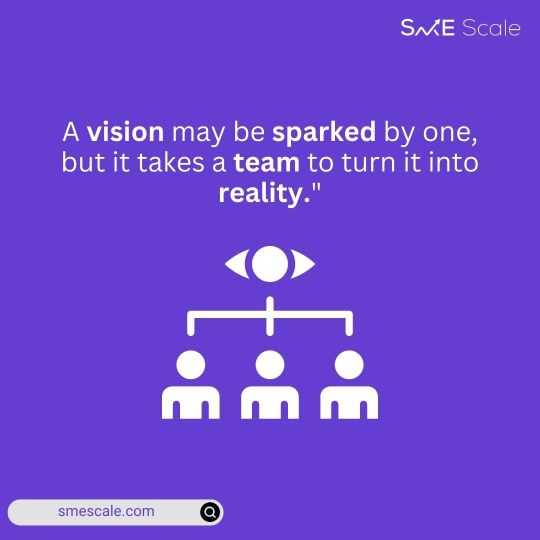
A vision may be sparked by one, but it takes a team to turn it into reality.
🌍 Did you know that 75% of employees consider teamwork and collaboration as essential to business success? While a great idea may start with a single person, it’s the power of a united team that brings it to life.
Team psychology shows us that when people feel part of a shared mission, they’re more motivated, resilient, and willing to go the extra mile. The synergy of diverse skills and perspectives turns vision into results, building something stronger and more sustainable than one person alone ever could.
How does your team come together to make things happen?
Share a moment when collaboration made all the difference! 👇
#SME Scale#Business growth#Scaling strategies#SME consulting#Digital marketing#Process automation#Sales optimization#Lead generation#Marketing automation#Growth blueprint#Customer acquisition#Business strategy#Online presence#SEO services#Content strategy#Digital transformation#Sales funnel#Business automation#Revenue growth#Marketing strategy#Business development
0 notes
Text
Why AI is SEO Friendly for Writing?
Today, where content reigns supreme, mastering Search Engine Optimization (SEO) is essential for anyone looking to increase their online visibility. With the advent of Artificial Intelligence (AI), the writing process has undergone a significant transformation, making it easier to produce SEO-friendly content. This article delves into how AI enhances SEO writing, supported by examples and…

View On WordPress
#AI#AI content generation#AI for content marketing#AI-driven SEO strategies#AI-powered keyword analysis#automated content creation#competitive analysis with AI#content personalization AI#data-driven SEO techniques#keyword research AI#machine learning for SEO#natural language processing SEO#predictive analytics in SEO#semantic search optimization#SEO#SEO optimization tools#voice search optimization
0 notes
Text
GravityWrite AI Tool: A Comprehensive Review and User Guide
GravityWrite AI Tool: A Comprehensive Review and User Guide In the fast-paced world of content creation, artificial intelligence tools are becoming essential for marketers, writers, and business owners. One of the most innovative and versatile AI writing tools to emerge is GravityWrite. GravityWrite AI Tool powered content creation platform promises to revolutionize how you generate, optimize,…
#AI for market#AI writing tool#automated writing#blogging tools#content optimization#content strategy#GravityWrite#natural language processing#product review#SEO writing#writing assistant digital#writing software
0 notes
Text
The Power of Personalized Email Marketing: Enhancing Customer Engagement
Personalized email marketing goes beyond simply addressing recipients by their first names. It involves creating highly targeted and relevant content based on a user's demographics, past purchases, browsing history, and other behavioral data. This approach allows businesses to deliver messages that resonate with each recipient on a personal level, increasing the likelihood of engagement and conversion.
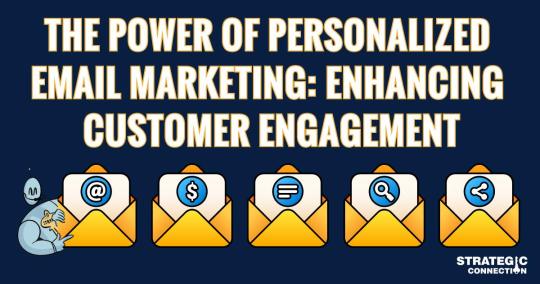
#Customer Engagement#Email Campaign Strategies#Email Marketing Tips#Targeted Email Campaigns#Customer Retention#Marketing Automation#Personalized Content#Email Marketing Best Practices#Customer Relationship Management (CRM)
0 notes
Text
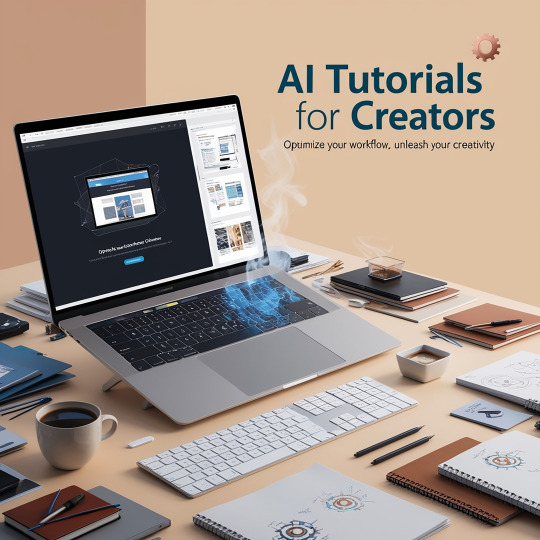
🚀 AI Tutorials Designed to Help New Creators Streamline Workflows! 🤖✨ Mastering AI doesn’t have to be hard! These beginner-friendly tutorials are crafted to help new creators automate tasks, simplify editing, and manage projects with ease. Dive in and learn how AI can take your workflow to the next level—so you can focus on what you love creating! 🎥💡 Click this link : https://tinyurl.com/fbhea698
#ai tutorials#streamline workflow#new creators#ai for beginners#content creation#efficient workflow#digital creativity#tech for creators#automate with ai#video editing#productivity boost#ai for success#creative efficiency#next level workflow#digital marketing#channel growth#youtube growth#tech tools#ai#creator community#digital#youtube tips#content strategy
0 notes
Text
Don Schuerman, CTO at Pegasystems – Interview Series
New Post has been published on https://thedigitalinsider.com/don-schuerman-cto-at-pegasystems-interview-series/
Don Schuerman, CTO at Pegasystems – Interview Series
Don Schuerman is chief technology officer and vice-president of product marketing at Pegasystems, responsible for Pega’s platform and customer relationship management (CRM) applications.
He has 20 years’ experience delivering enterprise software solutions for Fortune 500 organisations, with a focus on digital transformation, mobility, analytics, business process management, cloud and CRM.
Pegasystems offers a robust platform designed to help organizations achieve business-transforming results through real-time optimization. The platform enables clients to address key business challenges using enterprise AI decision-making and workflow automation, including personalizing customer engagement, automating services, and improving operational efficiency. Established in 1983, Pegasystems has developed a scalable and flexible architecture that supports enterprises in meeting current customer demands while adapting to future needs.
Given your extensive experience as CTO at Pegasystems, how does Pega GenAI distinguish itself in the rapidly evolving landscape of generative AI for enterprises?
Pega has been innovating AI solutions for years, including exploring generative AI well before it broke into the mainstream. I think there are three things that set us apart:
First, we’re not just speeding processes, we’re driving innovation. Most enterprise software vendors have rolled out various gen AI bots, agents, or co-pilot features, but the truth is these look-alike tools will not drive competitive differentiation. We enable our clients to reimagine how their entire business runs with unique tools such as Pega GenAI Blueprint, which provides best-of-breed app designs in seconds. We’re not just automating tasks; we’re fundamentally reimagining how businesses operate and innovate.
Second, we’re not just automating in isolation, we’re orchestrating how work gets done from start to finish. Other vendors sprinkle in these gen AI bot features and hope that’s enough to increase efficiency. Our platform is rooted in our industry-leading case management and orchestration, which enables us to not only automate with gen AI but also orchestrate and optimize the entire process from end to end.
Third, we’re not just a generic gen AI engine – we’re focused on driving better client engagement and workflow automation through AI. Sometimes, the problem at hand calls for the creative power of generative AI, whereas other issues might require predictive AI or decisioning AI to infuse more logic into the process.
In your Forbes article, “Unlocking The Potential Of Advanced AI For Business Innovation,” you mention the potential of generative AI to reimagine business operations. What are some specific examples where AI could catalyze legacy transformation in established companies?
Deutsche Telekom’s SVP of Design Authorities, Daniel Wenzel, described to the audience at PegaWorld iNspire this summer how he’s currently using Pega GenAI Blueprint to help him reimagine over 800 separate business processes in the HR services department. He says the biggest bottleneck in trying to improve these processes was that the businesspeople and IT don’t speak the same language, which leads to unrealized expectations. Pega GenAI Blueprint helps both stakeholders understand the process and how to improve it much faster than traditional methods, leading to more effective solutions.
The same article discusses the limitations of current generative AI applications. How can companies move beyond incremental productivity improvements to harness AI’s full transformative potential?
Most generative AI in enterprise software is applied as one-off features that help speed specific aspects of the process. But these types of features are commonplace now, providing little competitive advantage. Productivity hacks like summarization and text generation are table stakes – what businesses need to advance in the market is to use generative AI to innovate all new ways of doing business at a high level. For example, Gartner has identified a new technology category they call Business Orchestration and Automation Technologies (BOAT) that looks at driving business outcomes more holistically, from streamlining costs, to improving decision making, to reducing operational costs and using the right automation technologies for the job at hand. One-off gen AI features have their place, but it’s just a piece of the puzzle and not the silver bullet to solve all problems.
What are the most promising enterprise use cases for generative AI that go beyond typical productivity enhancements, and how can businesses best implement these?
The most exciting generative AI opportunity is the potential to inject best practices into a process. Those that are using gen AI to just write more code could be setting themselves up for more technical debt down the line. The injection of IP into the software design process is a game changer, enabling organizations to get to an optimal solution much faster based on years of experience. And because it’s developed as a visual model and not just lines of code, it’s easier to collaborate and refine it over time across technical and non-technical stakeholders. Previously, finalizing an app design could take weeks and required very specialized skill sets; now, these gen AI-powered tools enable business users to type in their specific needs in plain language and quickly move from concept to comprehensive design. Forrester recently published some research predicting that using AI to inject IP into low-code or model-based design systems will fundamentally shift how enterprises use software – allowing them to build more and buy far fewer ‘off the shelf’ apps. I think this is a big transformation, and we believe with Pega GenAI Blueprint we are well positioned to be the platform of choice for our enterprise clients.
You’ve previously suggested that generative AI can aid in product development by identifying market gaps. Can you elaborate on how this process works and share a real-world example?
Our Pega Customer Decision Hub is a predictive AI solution that helps our clients make the next-best action with their customers, whether that means up selling a product, fixing a service issue, or sometimes doing nothing at all. This allows us to connect with customers 1:1 with actions that best serve their individual needs. But operating in a 1:1 way means you need a great quantity of tailored offers – it’s far better than spamming everyone with the same message, but it requires marketing organizations to create more messages that are unique to different customer groups. Now with gen AI, we can uncover which customers have been underserved and then suggest new actions and build new treatments that would be more beneficial to these groups. This has the potential to help organizations expand into market audiences they have typically not been able to address.
How can established companies with legacy systems effectively integrate generative AI to remain competitive against more agile startups, particularly in reimagining their core operations?
I think we are entering a tipping point for legacy systems. For decades, large enterprises have been kicking the technical debt can down the road. We spent years applying band aid solutions like RPA that didn’t address the fundamental drain that legacy systems place on enterprises – they siphon off IT spend that could be going to innovation, they introduce risk, and they prevent enterprises from moving fast in changing markets. Luckily, I believe one of the superpowers of gen AI is that it will let us dramatically accelerate the rate at which we redesign and retire our legacy systems – not by simply recoding them, but by rethinking the workflows and processes themselves to both run on modern cloud architectures and deliver the digital experiences customers and employees expect.
In a separate article on establishing an AI manifesto, you emphasize the importance of tying AI strategy to actionable outcomes. Can you provide guidance on how businesses can align their AI goals with tangible business results?
Too many companies start by focusing on a shiny new tool like AI rather than starting by figuring out what their business objectives are and what problem they need to solve. By focusing on the tool rather than the problem, they pigeonhole themselves into a path that might not be optimal for their business. Instead, they need to step back and ask themselves what they are really trying to accomplish. Sometimes gen AI isn’t the right solution and may be better served by applying AI decisioning instead. They need to remember there are different types of AI that are better suited to solving different business problems.
How can businesses leverage generative AI to revolutionize their operations rather than just automating routine tasks? What strategies should they employ to maximize ROI in this area?
Don’t just focus on the individual tasks – this will prevent you from seeing the forest for the trees. Step back and understand your overall business workflows and the outcomes you are trying to drive from them. Generative AI can be used to analyze your processes and infuse best practices in any number of different industries. This can drive profound changes by enabling companies to rethink and redesign their core workflows. For example, AI can help design new operational models from scratch or re-engineer existing ones to improve efficiency and innovation. Establish clear metrics to measure success and regularly refine your approach based on these insights. By leveraging AI to drive meaningful change rather than incremental improvements, businesses can unlock significant value and stay ahead of the competition.
What industries do you believe are most poised to benefit from redesigning workflows using AI, and how should they begin implementing this approach?
Nearly any organization can universally benefit from improving their workflows, particularly in fast-changing markets. Services industries such as financial services, telco, and healthcare can likely realize the most gains to help streamline how they engage with their customers. These sectors handle complex, data-intensive processes and are under increasing pressure to improve efficiency, reduce costs, and deliver better outcomes. In addition, any industry with large amounts of legacy services – such as banking – can benefit by examining their processes likely established years ago to modernize them and ensure they keep pace with newer competition.
How does the ‘human-in-the-loop’ approach enhance the effectiveness and ethical deployment of AI, particularly in customer-facing roles?
Generative AI, while powerful, can produce outputs that are not always accurate or appropriate. By integrating human oversight, we can mitigate risks such as AI-generated content inaccuracies or ethical issues.
For instance, in customer service, AI can generate responses and recommendations, but having a human review these outputs ensures they align with company values and customer needs. This oversight is crucial for maintaining transparency and accountability, particularly when AI models produce plausible but incorrect or misleading information.
Interestingly, having a human in the loop allows you to take one of the weaknesses of gen AI – it is inherently non-predictable or non-deterministic, which means it doesn’t give you the same answer twice – and turn that into a strength. With Pega GenAI Blueprint, we use gen AI as a brainstorming partner, suggesting new approaches to workflow design. The human is always the final decider, but by constantly suggesting new approaches, gen AI pushes original thinking and helps humans avoid ‘repaving the cow path.’
Thank you for the great interview, readers who wish to learn more should visit Pegasystems.
#agents#agile#ai#AI models#AI strategy#ai-generated content#AI-powered#Analytics#app#applications#approach#apps#architecture#Article#automation#banking#bot#bots#Business#change#Cloud#code#collaborate#Companies#competition#comprehensive#content#crm#CTO#customer engagement
1 note
·
View note
Text
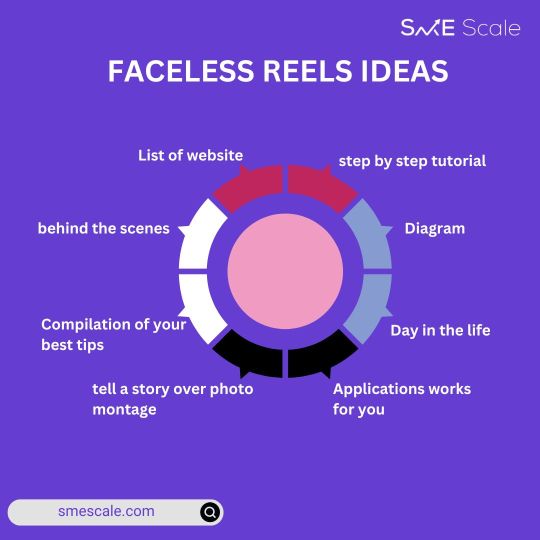
Faceless Reels Ideas: Engage Without Showing Your Face! Want to create engaging Reels but don’t want to be on camera? Here are some powerful faceless content ideas that can still deliver value and connect with your audience: http://smescale.com - #smescale #facelesscontent
#SME Scale#Business growth#Scaling strategies#SME consulting#Digital marketing#Process automation#Sales optimization#Lead generation#Marketing automation#Growth blueprint#Customer acquisition#Business strategy#Online presence#SEO services#Content strategy#Digital transformation#Sales funnel#Business automation#Revenue growth#Marketing strategy#Business development
1 note
·
View note
Text
Effective Email Marketing Strategies for Small Businesses
Did you know email marketing can give a big return on investment (ROI) of $52 for every dollar spent1? With 4.48 billion email users worldwide, it’s a strong, affordable way for small businesses to reach their audience, boost sales, and grow their brand. In fact, over 40% of B2B marketers see email as key to marketing success1. As a small business owner, you can use email marketing to build…
#Automated email sequences#Conversion optimization#Digital marketing tactics#Email campaigns#Email marketing strategies#Email marketing tools#Personalized email content#Small Business Marketing#Subscriber engagement#Targeted email outreach
0 notes